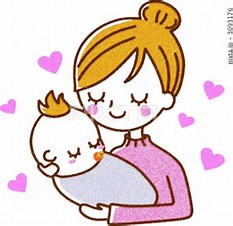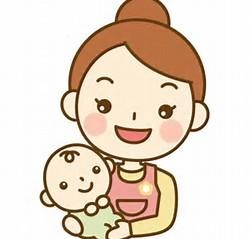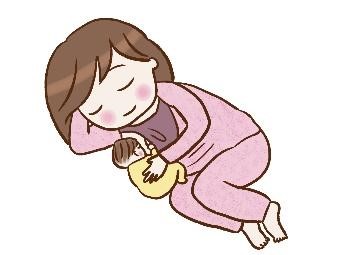21 Jul Breastfeeding is good for your child.
For mothers who are going to leave their babies in nurseries or daycares during their working hours.
 You don’t have to give up breastfeeding after your child enters daycare or nursery school. You can continue feeding your baby breastmilk by pumping milk and storing it in a bottle.
You don’t have to give up breastfeeding after your child enters daycare or nursery school. You can continue feeding your baby breastmilk by pumping milk and storing it in a bottle.
The reasons why breastfeeding is good for your child
- Mother’s milk includes a lot of immune-active proteins which are appropriate for your baby’s age. The more they drink, the stronger their immune systems become. Breastfeeding is effective for the prevention of infectious diseases. Your babies will be less frequently absent from daycare or nursery school, and you will be less frequently absent from your work. You may be able to avoid leaving from your job to take care of your sick baby, if your child is not susceptible to disease.
-
- According to research, breastfeeding can decrease the manifestation of type 2 diabetes by up to 30%, and the possibility of high blood pressure in adulthood. It may also help develop higher IQs.
- Breastfeeding is also good for the mother’s health. It can prevent breast cancer and ovarian cancer before menopause. The longer you breastfeed, the lower the incident rates of those diseases. Furthermore, breastfeeding may be able to decrease the mother’s chance of developing osteoporosis after menopause.
-
-
The Japanese government encourages prolonged breastfeeding.
According to the guide from the Japanese government to support lactation and weaning:
- All nursery schools and daycares have to support the use of frozen breast milk when the mother hopes to give it to her child, and especially when the child is less than 6 months of age.
- Mothers can come to nursery schools or daycares to breastfeed their children during breaks from their work.
- Nursery schools and daycares are expected to support the use of frozen breast milk, even when the child is older than 6 months of age.
-
There are 2 ways for you to continue breastfeeding.
- When you want to give your child your breast milk exclusively, you should provide the nursery school or daycare staff with either refrigerated or frozen milk to give to your child.
- When your child is in nursery school or daycare, the staff will provide him/her with formula milk and food. You can continue breastfeeding your child when he/she is at home. We especially recommend this method when your baby has started eating solid food.
If a mother is exclusively breastfeeding every 2 to 3 hours and then suddenly stops regular feeding, she may develop “mastitis”, which means “congested breast infected by bacteria”, because her breasts will fill with milk. Pumping breast milk is a good way to avoid mastitis.Please refer to “How to pump your breast milk.“
Are there any alternative plans if the baby does not accept bottled milk?

- It’s important that your child adapt himself/herself to the new nursery school teachers or daycare staff and the environment because almost all children can accept rubber nipples when they feel at ease with them.
- At first, it is best if your child stays in the nursery for only 2 to 3 hours until she/he gets used to the new environment. When you pick up and drop off your child, you are advised to let him/her nurse in the new environment.
- Nursery school teachers and daycare staff are advised to put the feeding bottle aside, and try to feed the child with a cup, spoon, or syringe.
- Nursery school teachers and daycare staff are advised to try holding the child like his/her mother does, and should make eye contact with the child.
- Nursery school teachers and daycare staff are advised to try wrapping the child with something such as towels or clothes which have the smell of the child’s mother.
- Nursery school teachers and daycare staff are advised to let the child drink bottled milk before the child becomes too hungry (It’s too late when he/she starts to cry). The best times are:
- When they start a chewing motion and look for their mother’s breast.
- When they are calmly awake.
- When they are half asleep.
- If the child does not drink bottled milk, nursery school teachers and daycare staff are advised to warm the rubber nipple up to body temperature in order to make it softer. When he/she begins teething, a cold rubber nipple may work.
Your child may nurse more often during the night after entering nursery school or day care.

- It is a way for the child to adapt to his/her new life.
- It’s perfectly fine to let your child suckle your breasts while lying on the bed. It is a good way for you to not make yourself tired.
- Sometimes your child may have his/her sleep patterns disturbed. For example, your baby may have an afternoon sleep longer than usual, and as a result, your child may stay up later at night.
Children often want to nurse in the morning, and when you pick him/her up from the nursery school or daycare.
- You can nurse your child in the nursery school or daycare when you pick up your child and when you come home for at least for 30 minutes.
- If necessary, ask your husband to do the housework for you so that you can meet the needs of your child.
- If you have to do a lot of housework, you should try to get up 20 minutes earlier than usual and let your child nurse. Almost all children can suckle when they are half asleep. You may let your baby nurse while you are lying on the bed. You can allow your child to nurse again just before you leave the house.
☆Kin-ikyo Sapporo Hospital☆
Please refer to “Breastfeeding Info” by La Leche League international (LLLI): https://www.llli.org/breastfeeding-info/


